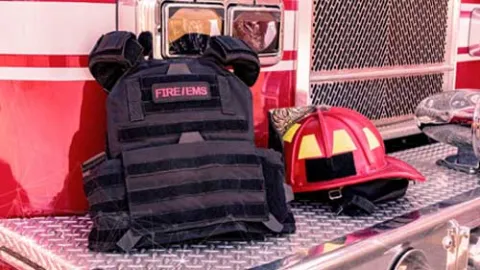
The Science and Technology Directorate (S&T) plays a critical role in the research, development, test, and evaluation of personal protective gear for first responders. This mission is vital in ensuring that firefighters, law enforcement, emergency medical technicians, and front-line operators across disciplines are equipped with the most advanced and effective protective equipment available. By leveraging cutting-edge technology and innovative research methodologies, S&T works to enhance the safety, performance, and durability of personal protective gear.
S&T's efforts are collaborative, involving partnerships with federal, state, local, and tribal agencies, as well as private sector and academic institutions. Through rigorous testing and evaluation processes, S&T ensures that the equipment meets stringent safety standards and can perform effectively in real-world emergency situations. By prioritizing the needs of first responders and continually advancing protective technologies, S&T significantly contributes to the preparedness and response capabilities of emergency services across the nation, ultimately safeguarding the lives of those who serve on the front lines of public safety.
Our work focuses on:
- Enhanced Safety and Security
- Adaptability to Evolving Threats
- Technology Integration
- Operational Efficiency
- Collaboration and Standardization
Watch
News
- Feature Article: Wearable Tech Mitigates First Responder Exposure to Chemical Threats
- Feature Article: Field Testing a New Firefighter Respirator
- Feature Article: Putting Our Heads Together for Firefighter Safety
Resources
- Wildland Firefighter Respirator Fact Sheet
- Wildland Firefighter Respirator Device Operational Field Assessment Report
Resources from concluded programs are available for reference.
- Advanced Multi-threat Base Ensemble for Responders (AMBER) Fact Sheet
- Burn Saver Operational Field Assessment Report
- Burn Saver Thermal Sensor Fact Sheet and Video
- ChemTag – Personal Chemical Warning Device Fact Sheet
- ClearAlert: Wearable Sensing Badge for Solid Aerosol and Contact Exposure to Fentanils Fact Sheet
- Low-Profile Self-Contained Breathing Apparatus Fact Sheet
- MaXphone—Multi-access Extension for Smartphones Fact Sheet
- Mission-Adaptive, Modular Law Enforcement Helmet Design Fact Sheet
- Multifunctional Textiles for Advanced Personal Protective Equipment Fact Sheet
- Physiological Monitoring Fact Sheet
- Portable Handset Integrated Next-Generation Incident Command System (PHINICS) Factsheet
- Rescue Hoist Gloves for Responder Mission Report
- Respiration Protection for Firefighters During Overhaul Operations Fact Sheet
- Respiratory Protection for Medical Personnel Fact Sheet
- Self-Contained Breathing Apparatus (SCBA) Fact Sheet
- Smoke and Particulate Resistant Structural Turnout Ensemble Fact Sheet and Video
- Wearable Alert and Monitoring System (WAMS) Fact Sheet
- Wearable Smart Chemical Sensor Fact Sheet
- Wearable Smart Chemical Sensor: Small, Rugged Monitor Warns First Responders of Toxic Exposure (Morphix) Fact Sheet
- Wildland Firefighters Advanced Personal Protection System Fact Sheet




